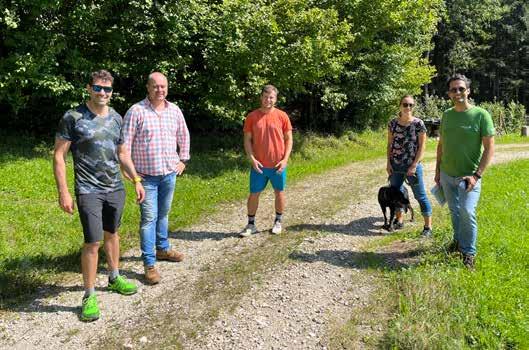
1 minute read
GIVING BACK INITIATIVE
Cooperation with the Austrian Alpine Club
GIVING BACK is the name of a new initiative launched by M. Swarovski GmbH. The goal is to put social and ecological responsibility into action to an even greater extent in the future.
Advertisement
More precisely, the initiative supports social projects and investments in nature conservation, and the Austrian Alpine Club (ÖAV) is one of its partners.
The first action taken as part of this exciting cooperation was for the partners to visit the hiking and mountain-biking routes around Waidhofen an der Ybbs in Lower Austria together. On 6 September, six company teams set out to inspect the state of roads, paths and trails in ideal hiking and mountain-biking weather. And the SWARCO Advanced Industry Systems team was part of it, too. Together, signs and markings were carefully examined. In this way, the teams spent valuable time volunteering for the Alpine Club.
Another initiative partner is the Lebenshilfe association in Hiesbach, Lower Austria. The politically independent association advocates for the rights of people with disabilities in society and provides various services and support to actively help them in their daily lives. Here, too, M. Swarovski GmbH is happy to be a supporter.
Conventional economic cycles are based on a model of infinite resources. It is well known that this does not reflect reality. Therefore, more and more companies have been trying to at least partially transition to sustainable cycles. The goal is to maintain a closed loop for all materials and generate the energy needed for processing from renewable sources. This requires new systems and processes, however, that have a major impact on a company’s entire strategic business orientation. For this reason, most business people consider a complete transition to a circular economy utopian.
SWARCO Advanced Industry Systems is leading by example when it comes to a gradual transition. High-grade recycled glass is sourced from the flat glass industry, which requires about 50% less energy compared to using primary raw materials for production. The recycled material used consists solely of cuttings and scraps from industrial glass of the highest quality, that is, post-industrial waste. The origin and trajectory of the glass can be fully traced. To minimize transport distances, we purchase the raw materials in the region near each production facility. This is an important step towards a circular economy – the economic system of tomorrow.




